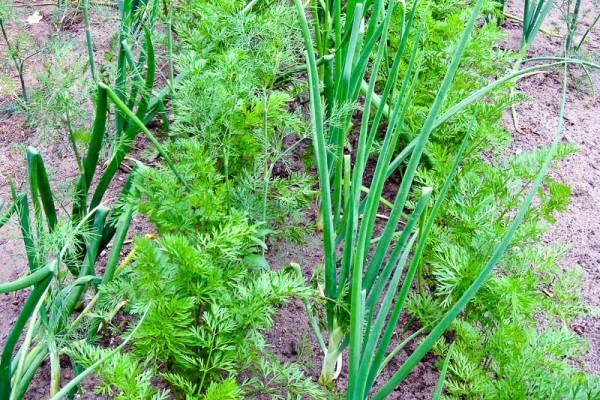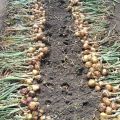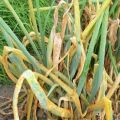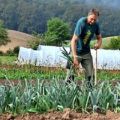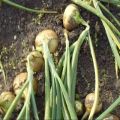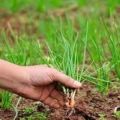The timing when you need to remove onions from the garden in the Urals
Growing onions is one of the most common jobs in the garden. A vegetable grows well in different regions, if you follow its agricultural techniques correctly.
For residents of northern latitudes, there are differences in when to harvest onions in the Urals and in other cold areas, how to store them, and which variety should be purchased for planting.
Climate features and variety selection
For Ural gardeners, growing high-quality onions outdoors is a challenge. The climate here is quite cold, and the seasons have slightly different periods than in the southern regions. So, in June the air temperature may be completely unsuitable for sowing and growing vegetables, and in August cold and rains already begin.
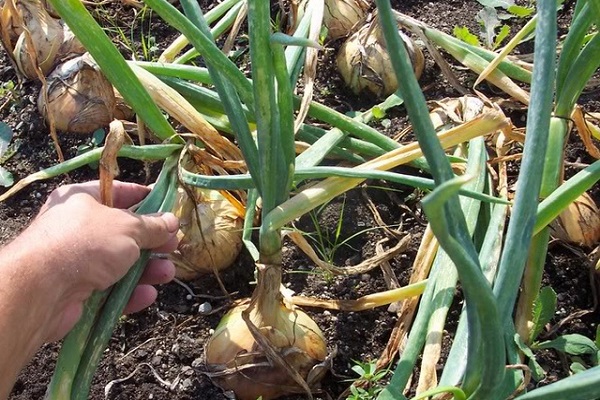
The period favorable for the growing season of vegetable crops is short. Therefore, onion varieties should be chosen early ripe. Such varieties should mature on average in 1-1.5 months.
Early and mid-season varieties are suitable for planting onions in the Urals. It is worth choosing from those species that are intended for cultivation in the northern regions. Their seeds are adapted to cold climates and germinate well.
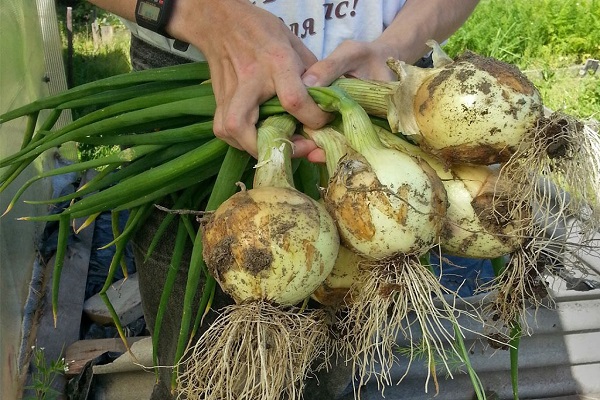
The most in demand among the Ural vegetable growers are the following varieties of onions:
- Odintsovets.
- Bessonovsky is local.
- Stuttgarden Riesen.
- Karantalsky.
- Cape.
- Strigunovsky.
They are the most productive and adapted to the climate in the Urals. The varieties have all the necessary taste and vitamins. Onions have a short growing season and excellent immunity to fungi and pests.

Most of the root crops differ in that they can be removed from the soil even at the ripening stage. They are able to pick up flavor and juiciness when plucked.
Onions are obtained in early August. The colder the climate and the shorter the growing season of a vegetable planted in the northern region, the earlier it is dug out of the ground. Some onions do this. The peculiarities of the climate force you to choose the variety of vegetables more carefully. The culture must be resistant to weather changes, high humidity and even slight frost.
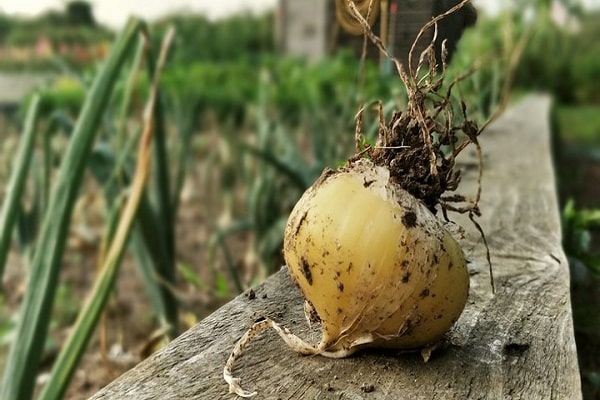
Depending on the weather conditions of the region, not only varieties are selected, but also methods of agricultural technology. In the northern regions, vegetable growers have long been using specific methods and methods of growing various root crops.
This includes the use of greenhouse buildings, the specific choice of feeding and fertilizing the land. It is important for the gardener to adhere to the simple rules for growing onions, or, as it is also called, turnips.
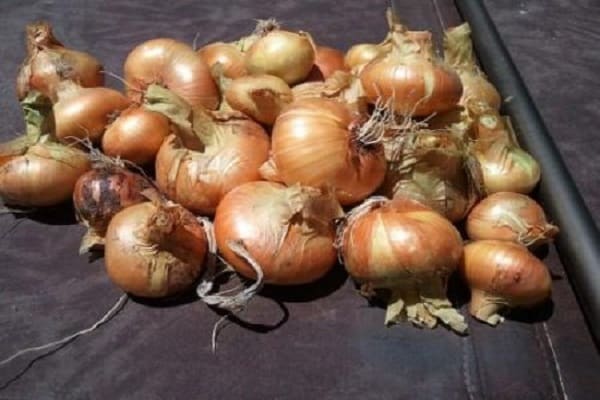
Newbie mistakes
Novice gardeners often make the same mistakes when growing a crop. Initially, you need to choose the right onion sets for planting. It is recommended to visually assess its integrity.
The onion should be firm and dense, the husk, without much damage, tightly envelops the underground shoot. Sevok is chosen dry. Wet planting material can immediately deteriorate in the soil without yielding a crop.
Of the common mistakes, the following can be distinguished:

- Late harvest. Most growers wait until the tops of the onions (feathers) turn yellow and dry, taking this as a signal that the root crop is ripe. In this case, it is recommended to take into account the specifics of the variety and adhere to its growing season. If you overexpose a vegetable in the ground, then it will re-take roots and feathers. The splinter itself will start to deteriorate. Family onions not harvested in time are not stored for a long time. Moreover, its taste becomes much worse.
- It is a mistake to think that ripe onions should have heads from the garden well visible. Here, too, it is necessary to take into account the peculiarities of the planting material. There is a type of culture where the root crop sits deep in the ground and grows more in breadth.
- Damage to the crop can occur from early digging of the turnip. If the description of the variety does not provide for its early extraction from the soil, then this is not necessary. It is important to carefully read its characteristics before planting sevka and act in accordance with agricultural technology.
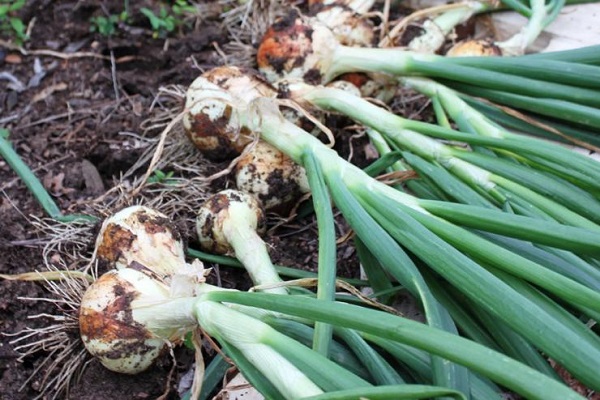
Determining the terms
Harvesting onions in the Urals has its own characteristics. When deciding on the timing, you need to take into account many parameters and signs that the vegetable is ripe.
Mathematical calculations
If the characteristics of the seedlings indicate a vegetation period of 65 to 95 days, then even taking into account the peculiarities of the climate, it matures in 70-75 days.
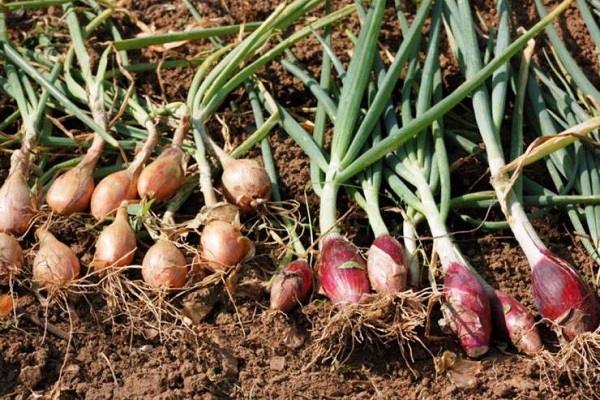
Counting the numbers should start from the moment the onion is planted. It is best to write down the date and add the appropriate number to it. The most suitable time for planting is the beginning of May. Let it be the 10th number. We add the required time to it. It turns out that the harvest can be carried out as early as the 20th of July. It is more convenient to do the counting if in this case you are using a calendar.
For the gardener, January, February and March are left blank in the calendar. During these months, work can only be carried out in greenhouse structures. August, September and October are already considered unproductive months for the Urals. In August, the last onion harvest takes place.
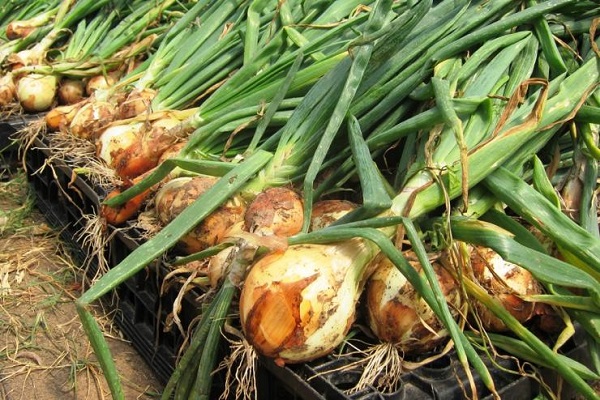
Weather
Weather conditions play an important role for the gardener. It depends on them how much the growing season of the vegetable will be reduced or, conversely, extended.
If the summer in the Urals is early and the earth warms up, then the planting of seedlings is carried out already in early May. After planting, rains and a cold snap may begin, then the ripening of the root crop will stretch.
Prolonged summer rains in Siberia are a frequent occurrence, so it is important to carefully select the onion variety for growing.
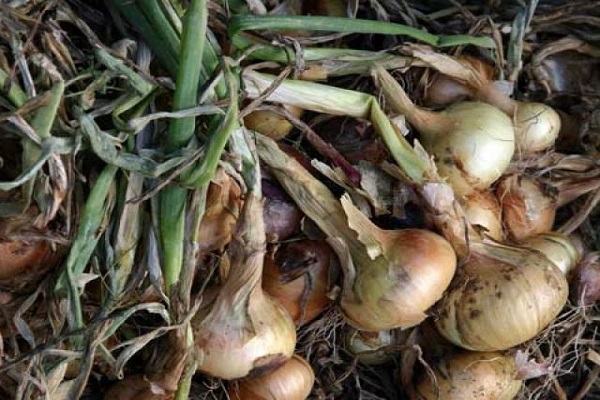
External parameters
If the weather conditions knocked down all the mathematical calculations of the ripening time, it remains only to focus on external signs.
Parameters of the onset of the turnip harvest period:
- Full maturity occurs approximately 2 months after planting. Green feathers turn yellow at the bottom and dry out. Onion feathers begin to turn yellow in late July or early August.
- One can observe that the feathers no longer stand exactly as before. The leg of the onion becomes soft and flakes.
- In almost all onion crops, they are guided by the condition of the husk when harvesting. It should be dry and make a rustling sound.
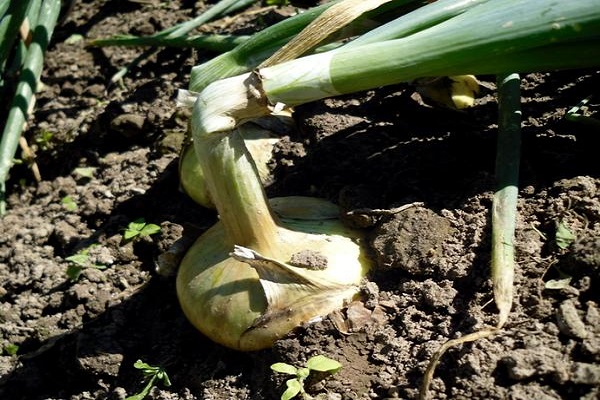
Can the ripening process be accelerated?
There are 2 ways to help speed up the ripening process:
- The green and juicy onion feathers need to be broken a little and bent to the ground.This will allow the plant to use all its forces on the formation and maturation of the root crop itself.
- Gently digging with a shovel, trying to cut off the long roots of the onion, while trying not to touch the turnip. The method allows you to redirect juices and forces to the earliest ripening of the tuber. You can dig root crops out of the ground 1-2 weeks earlier than usual.
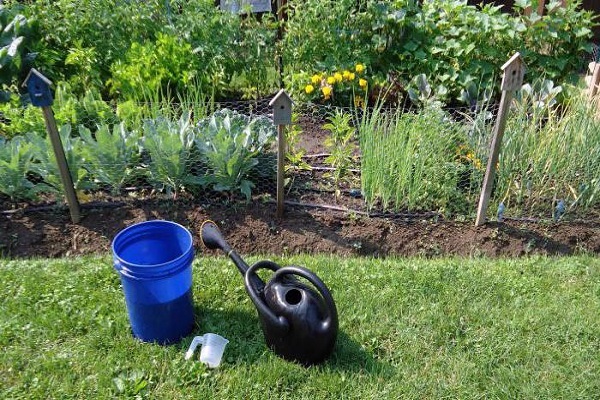
Cleaning features
2 weeks before harvesting, watering the beds is completely stopped. Choose the bow by hand or using a pitchfork.
The crop must be well dried before being sent for long-term storage. To do this, he is placed in a well-ventilated area for 2-3 weeks.
The gardeners of the Urals cannot always choose sunny days to dig out the harvest, so they have to prepare the onions for storage especially carefully and for a long time.
